Volume 16, Issue 1
Displaying 1-15 of 15 articles from this issue
- |<
- <
- 1
- >
- >|
-
2009Volume 16Issue 1 Pages 1-14
Published: October 31, 2009
Released on J-STAGE: May 20, 2011
Download PDF (2753K) -
2009Volume 16Issue 1 Pages 15-21
Published: October 31, 2009
Released on J-STAGE: May 20, 2011
Download PDF (1218K)
-
2009Volume 16Issue 1 Pages 24-27
Published: October 30, 2009
Released on J-STAGE: May 20, 2011
Download PDF (1902K) -
2009Volume 16Issue 1 Pages 28-31
Published: October 30, 2009
Released on J-STAGE: May 20, 2011
Download PDF (381K) -
2009Volume 16Issue 1 Pages 32-33
Published: October 30, 2009
Released on J-STAGE: May 20, 2011
Download PDF (1063K) -
2009Volume 16Issue 1 Pages 34-35
Published: October 30, 2009
Released on J-STAGE: May 20, 2011
Download PDF (179K) -
2009Volume 16Issue 1 Pages 36-37
Published: October 30, 2009
Released on J-STAGE: May 20, 2011
Download PDF (164K) -
2009Volume 16Issue 1 Pages 38-39
Published: October 30, 2009
Released on J-STAGE: May 20, 2011
Download PDF (167K) -
2009Volume 16Issue 1 Pages 40-41
Published: October 30, 2009
Released on J-STAGE: May 20, 2011
Download PDF (140K) -
2009Volume 16Issue 1 Pages 42-43
Published: October 30, 2009
Released on J-STAGE: May 20, 2011
Download PDF (200K) -
2009Volume 16Issue 1 Pages 44-45
Published: October 30, 2006
Released on J-STAGE: May 20, 2011
Download PDF (619K) -
2009Volume 16Issue 1 Pages 46-47
Published: October 30, 2009
Released on J-STAGE: May 20, 2011
Download PDF (688K) -
2009Volume 16Issue 1 Pages 48-49
Published: October 30, 2009
Released on J-STAGE: May 20, 2011
Download PDF (146K) -
2009Volume 16Issue 1 Pages 50-51
Published: October 30, 2009
Released on J-STAGE: May 20, 2011
Download PDF (151K) -
2009Volume 16Issue 1 Pages 52-53
Published: October 30, 2009
Released on J-STAGE: May 20, 2011
Download PDF (115K)
- |<
- <
- 1
- >
- >|
